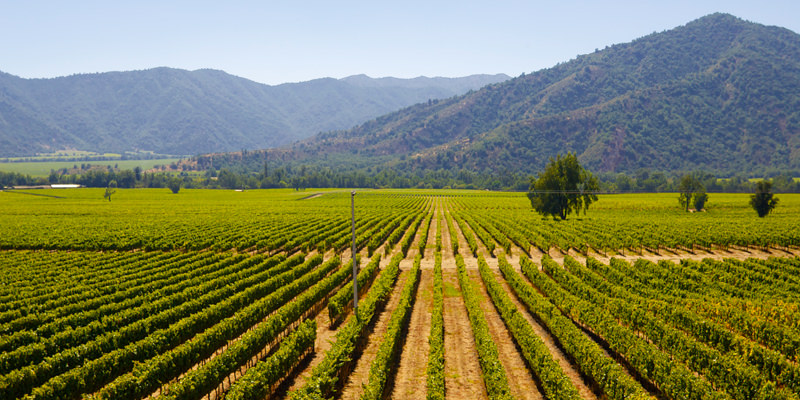
You’re browsing the wine shelf at your local wine store. You pass bottles from France, Italy, California, Spain. You see the usuals, but you want something different, something special. If that’s the case, keep walking. Stop when you spot the Chilean section. Chilean wine, no matter what you think about the taste, is special.
Chilean wine is unique because it’s the only major wine-producing country that hasn’t been hit by phylloxera, an aphid-like louse that eats grapevine roots. That sets it apart from all of your favorite bottles from around the world in a major way.
In 1830, a Frenchman named Claude Gay told the Chilean government that it needed to set agricultural norms. The government agreed and created the Quinta Normal Agriculture, which was tasked, in part, with regulating all grape-based agriculture. Twenty years later, the Quinta Normal Agriculture was looking over 40,000 vines and some 70 different varieties of Vitis vinifera, the wine grape species in Europe.
Around the same time, European winemakers were bringing grape vines from North America, Vitis labrusca, over to Europe. They didn’t realize that also hiding in those rootstocks was phylloxera.
Phylloxera is a vinifera gourmand that loves heavy clay soils. They travel in packs of primarily small, wingless females, which lay minuscule pear-shaped yellow eggs on grapevine roots. When the soil warms to over 60 degrees, the phylloxera spring into action and start to eat. They travel by crawling from root to root, or on vine cuttings, boots, and farming equipment.
When phylloxera attacks, they attack in groups. They eat the small roots, making them swell and turn a sickly yellow. Then they hit the mature roots, where the swelling is less noticeable. What is noticeable are the spots of dead root tissue where the phylloxera munched. Secondary fungal infections come after the feeding frenzy. Before long, entire sections of the grapevine’s root system die.
The bug quickly spread in Europe, devastating major vineyards before spreading to vineyards around the world. Pesticides don’t work on phylloxera, nor do any other pest management methods. It wasn’t until around the end of the century that vineyard owners found a solution that went straight to the heart of the problem: sturdy, phylloxera-resistant American rootstock. So the roots of American grapevines were grafted onto the roots of European wine varieties.
Chile, however, never had to find a phylloxera solution because they never had a phylloxera problem. Part of that is geography. It’s isolated, with the Pacific Ocean on one side and the Andes Mountains on the other. Another reason is the government. The Quinta Normal Agriculture actively ensured that infested vines and soil weren’t imported to other countries. Today, Chile has some of the oldest vines with Vitis vinifera rootstock.
So walk straight to the Chilean section for that special bottle you’re looking for. Try a carmenère, perhaps. You won’t taste many other wines from pre-phylloxera vines.

